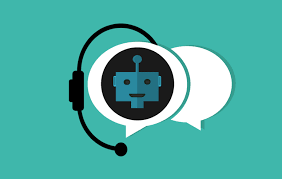As chatbots continue to become more advanced and ubiquitous, developers are exploring new ways to enhance the user experience. One approach that is gaining popularity is the incorporation of haptic feedback, which provides tactile sensations to users through their devices. This technology has the potential to create a new dimension of interaction, enabling chatbots to provide a more immersive and intuitive experience.
 So, what exactly is haptic feedback? Haptic technology uses sensors and other devices to provide users with tactile sensations such as vibrations, pressure, or temperature changes. It has been used in a variety of applications, including gaming, virtual reality, and medical training. By incorporating haptic feedback into chatbots, developers can provide users with a more natural and engaging way to interact with these AI-powered assistants.
So, what exactly is haptic feedback? Haptic technology uses sensors and other devices to provide users with tactile sensations such as vibrations, pressure, or temperature changes. It has been used in a variety of applications, including gaming, virtual reality, and medical training. By incorporating haptic feedback into chatbots, developers can provide users with a more natural and engaging way to interact with these AI-powered assistants.
One of the most obvious applications of haptic feedback in chatbots is to provide users with alerts or notifications. For example, a chatbot could use a vibration or other physical sensation to alert users to important information or events. This can be especially useful for users who may not be able to receive audio or visual cues, such as those with hearing or vision impairments.
Another potential use case for haptic feedback in chatbots is to provide a more intuitive way of navigating menus and options. Rather than relying on voice commands or text input, users could use haptic interfaces such as gloves or touchpads to select options and navigate through menus. This could be particularly useful in applications where users may not be able to use traditional input methods, such as in a noisy or distracting environment.
Haptic feedback can also be used to enhance the emotional connection between users and chatbots. By providing physical sensations in response to user input, chatbots can create a more human-like experience that can be more engaging and satisfying for users. For example, a chatbot designed to provide emotional support could use haptic feedback to convey empathy and comfort to users.
However, incorporating haptic feedback into chatbots does come with some challenges. One of the biggest is the need for additional hardware and software development. Haptic interfaces such as gloves or touchpads require specialized hardware and software to function, which can be expensive and time-consuming to develop. Additionally, the development of haptic interfaces requires a deep understanding of human physiology and psychology, which can be difficult to incorporate into the development process.
Despite these challenges, the potential benefits of adding haptic feedback to chatbots are significant. By providing users with a more immersive and engaging experience, chatbots can become even more valuable tools for businesses and individuals alike. As the technology continues to evolve, we can expect to see more chatbots incorporating haptic feedback and other advanced features that take the user experience to new heights.